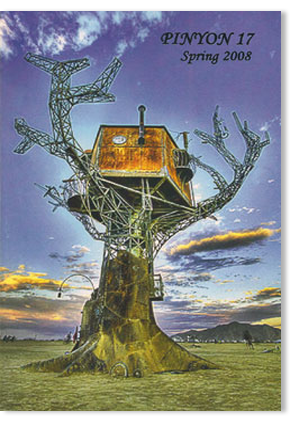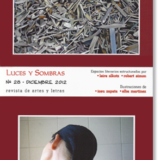
Pinyon
Niñamiel (Honeygirl)
We discovered that Niñamiel had hair in her armpits. That day the wasps didn’t show up. It happened by the river.
We always went to the river on summer afternoons. All the boys and one girl, Niñamiel, with Doña Julia, her mother. She was the only mother there. Niñamiel was never alone. She wore a swim suit with a big white long-sleeved shirt over it. She was plump, bigger than all of us. She couldn’t swim but with her fat arms she splashed more water than anybody. That made her laugh. Her laughter was loud and abundant. Esta niña, se ríe de nada. This girl, her mother said, she laughs at anything.
Niñamiel got tired very quickly, she couldn’t breathe well and her mother had to clean her nose all the time. Sopla, sopla, no sé qué te crece en esas narices. Blow, blow, I don’t know what you grow inside your nose. She came out of the water and rested under the poplar trees. She leaned her back and head against a trunk, let her arms drop and fell asleep. She slept with her mouth wide open. After a while she started drooling. That’s when the wasps came.
The wasps came every afternoon, three, four, five sometimes. They waited until she was asleep, landed on her lips and started sucking her saliva. They buzzed their wings and walked around the mouth with their thin, delicate legs but never stung her. Doña Julia didn’t try to scare the wasps away. Mira, mi niña tiene miel en la boca. Look, my girl has honey in her mouth. She explained to us. That’s why we called her Niñamiel. Then she added, Mi hija nunca le hará mal a nadie. My daughter will never hurt anybody.
The wasps always came to eat from the mouth of Niñamiel until that afternoon at the end of the summer. She didn’t get into the river that day. Hoy está mala mi niña. My child is sick today. Niñamiel waited by the river bank, lifted her arms and waived her hands in the air. She didn’t wear her white shirt. We all saw that she had grown hair in her armpits. She got tired soon as usual and went to rest under the poplar-trees. She fell asleep with her mouth opened but that day the wasps didn’t come. We all knew that something was wrong with her. Niñamiel never came back to the river.
Niñamiel died that December. We all went to the funeral, all the boys that used to spend the summers together by the river. Her coffin was not white, it was made of dark wood, and that surprised me. I knew that all children were buried in white coffins. Madre,¿por qué no la entierran en una caja blanca? Why don’t they bury her in a white coffin? Sabes, ya no era una niña. You know, she was not a child anymore. My mother answered.
Five wasps entered the church and flew over the open coffin exposed at the altar. They stayed suspended in the air like a miniature crown. Niñamiel’s lips were sealed with wax. The wasps dropped dead on the marble floor. When the porters lifted the coffin their black shiny shoes crushed the wasps, they crackled like dry, tired tissue paper. The shoes left nothing behind, not even dust.





